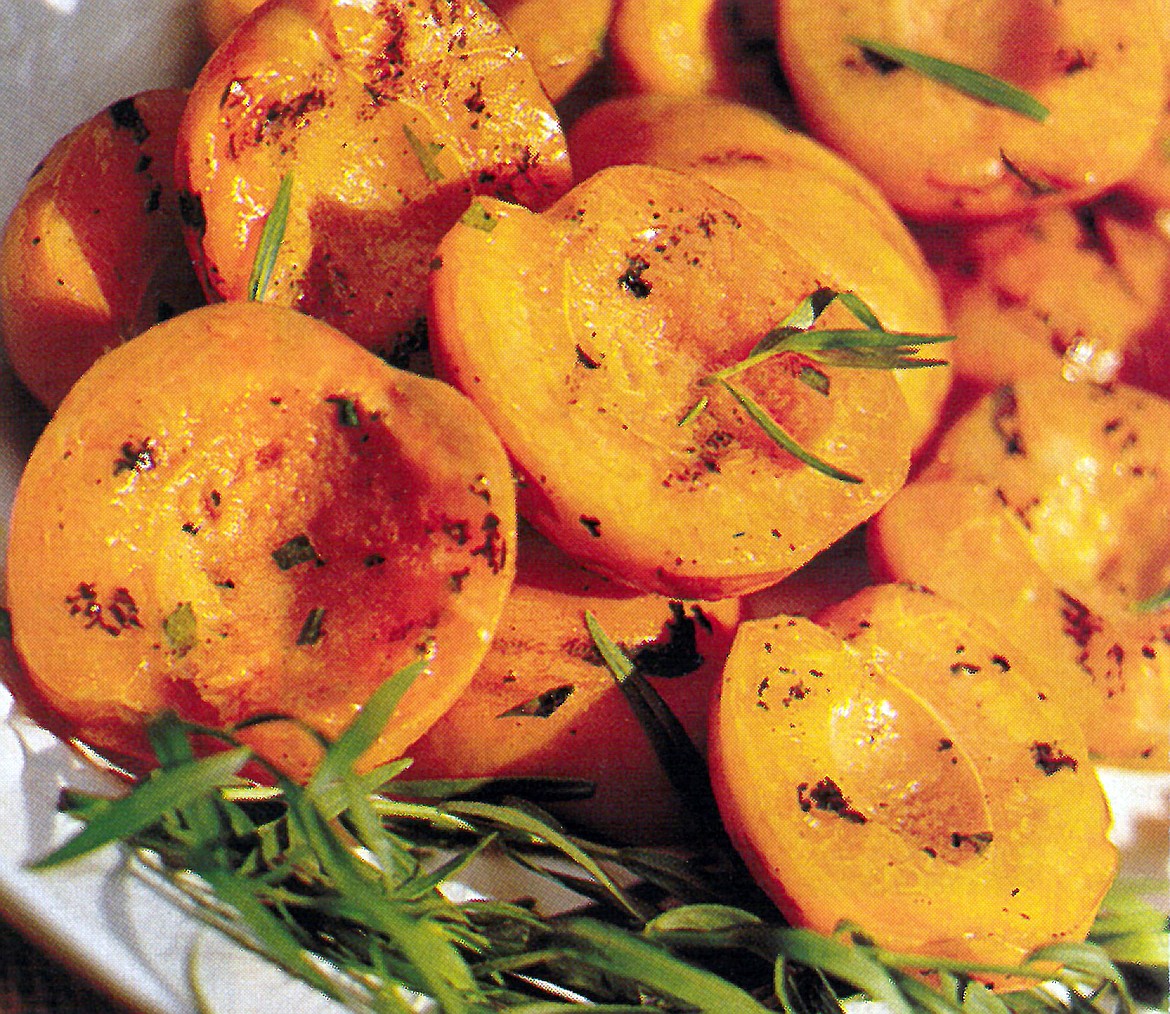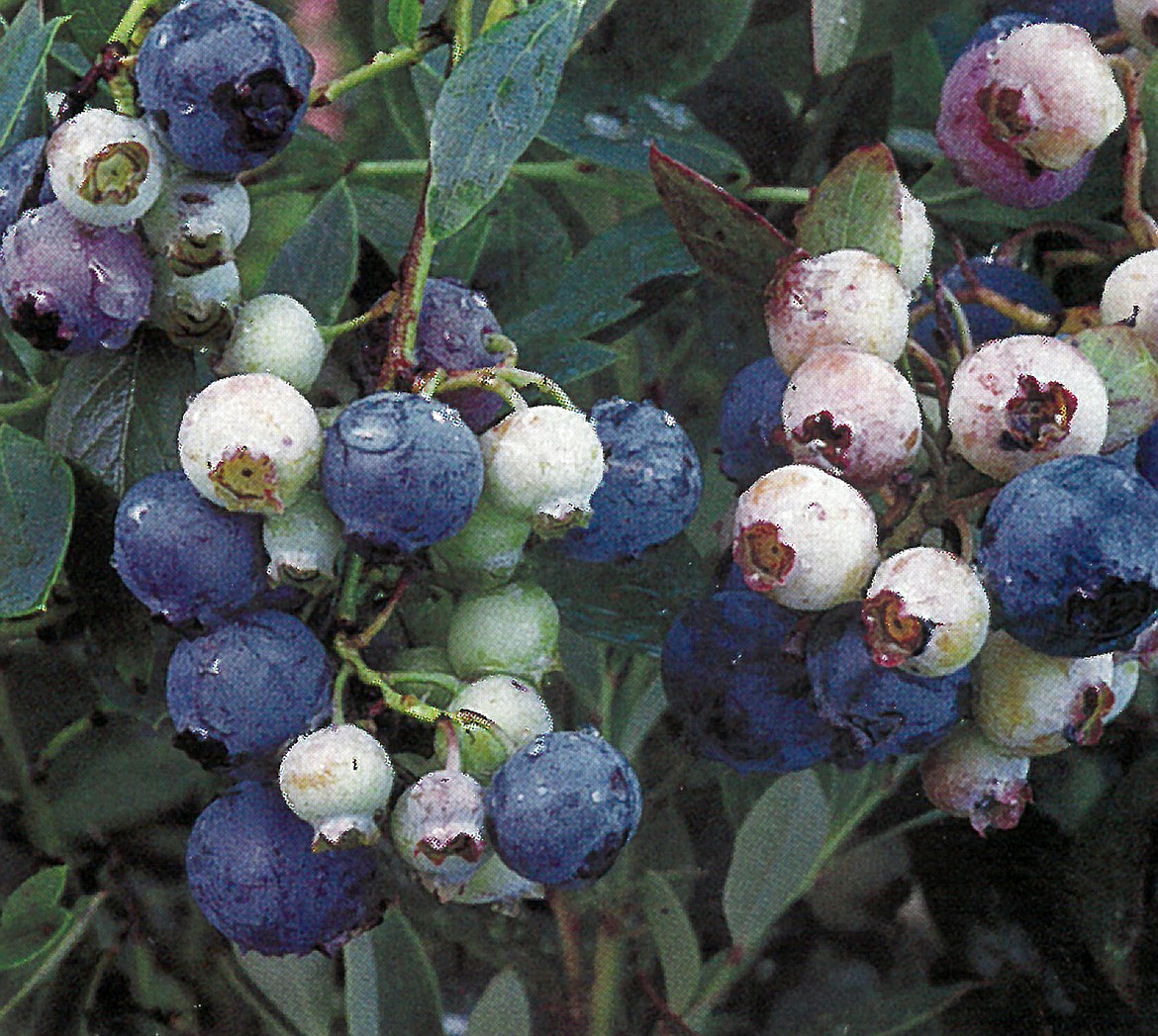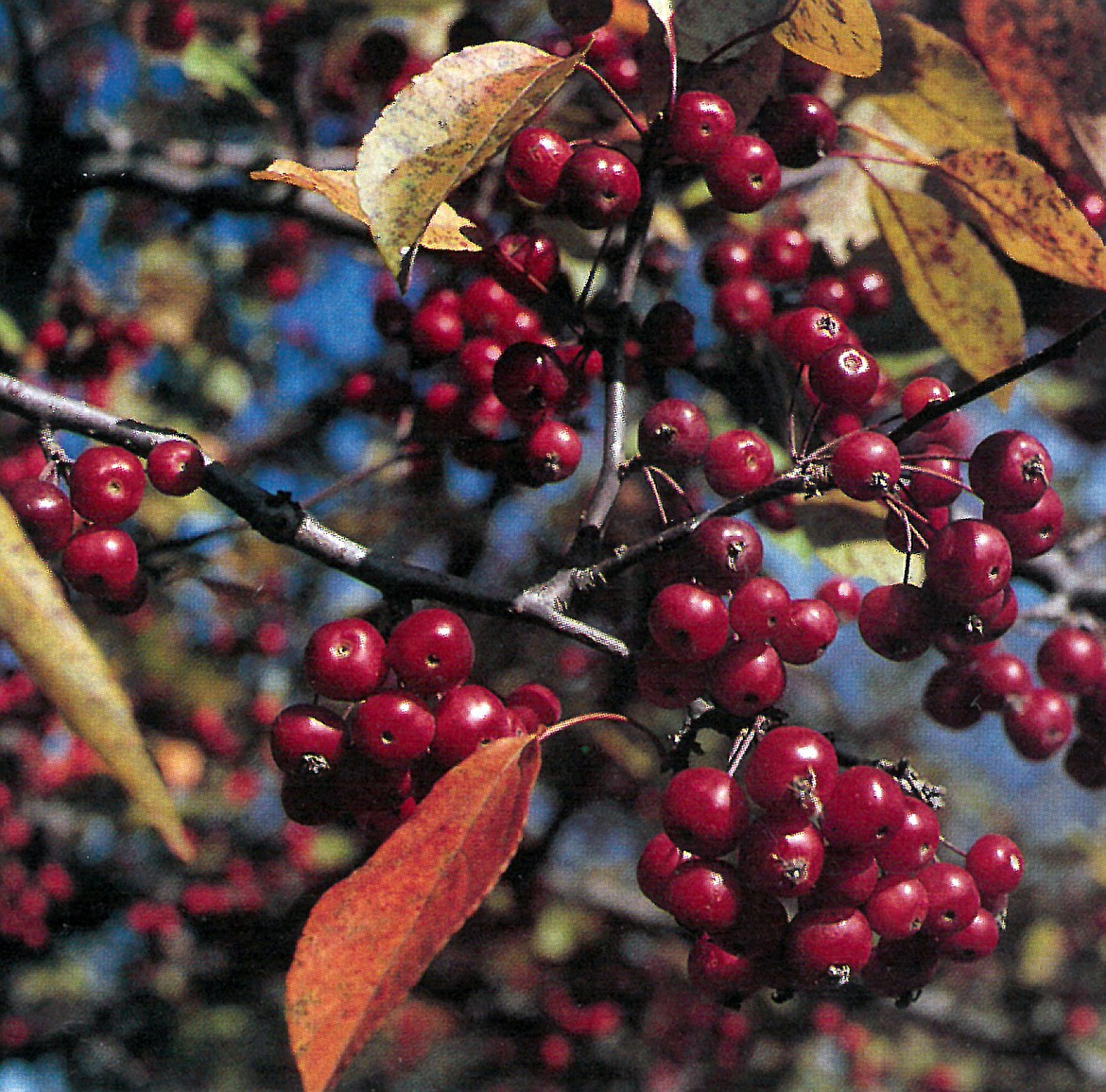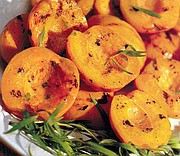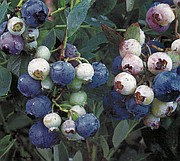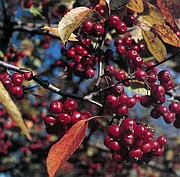Small fruit trees, shrubs: full-size beauty, delicious crops
While we north Idahoans are blessed with many wild fruit-bearing trees and shrubs, domestic fruits offer that something extra for the kitchen as well as beauty and benefit to the landscape.
While some choices offer edibles to the grower, the general overview is for a combination of attractive practicality, sustenance through fruit or pollen to birds and insect pollinators and often, safe harbor for nesting birds. Today we’ll take a look at some of the possibilities available at nurseries throughout the area.
The Malus species includes apples and crabapples; while the standard sizes of these fruit trees are not viable for our focus on small ornamental trees, there are many options — some considered ornamental, but bearing perfectly edible — if miniature — fruits. They include a huge variety of options, setting blooms ranging from white through pink to rich raspberry red. Two particularly well-recommended crabapples are “Profusion” and ”Sugar Tyme”: “Profusion” (pictured) grows to 25 feet with an equal spread. The tree covers itself with rose-pink flowers which produce dark red fruits. The foliage too is an asset, which takes on beautiful colors of purple and bronze. Sugar Tyme grows uprightly to 18 feet with fragrant pink-tinged white flowers and persistent half-inch red fruits.
The Prunus genus includes peaches, apricots, cherries, almonds and a great variety of plums. Again, there’s an enormous variety of choices for these small trees that range from those setting actual fruit to blossoming types only. The weeping cherry is an example of the beauty of this genus. Any and all add such an array of delicate loveliness to the landscape along with benefit to pollinators and nesting birds, that some time in nursery-shopping is well spent. While peaches don’t stand much of a chance unless special tactics are employed for their lack of cold weather hardiness, dwarf apricots are another matter. Hardier than their larger-sized cousins, they want a warm, sunny, protected spot to welcome their rare tart-sweet offerings.*
Shrubby fruit-bearing ornamentals such as raspberries, blackberries and many cultivars are widely available. While huckleberry culture is still a dream, blueberries offer tasty and prolific options. I enjoyed a Tophat blueberry in an enormous planting pot for several years. Now, many cultivars are available — even pink-berried options! They, as their tall forebears, offer a variety of dwarf choices for an amazing focal point that’s gorgeous as a shrub and loaded with luscious berries, followed by red leaves in the fall.
Much research over the years by growers has resulted in tougher breeds of blueberries. They were often finicky about winter temperatures, especially if the winter is too warm, plants don’t get enough chill to set fruit. Now, breeders have released varieties better suited to temperature extremes. “Chippewa” grows 3- to 4-feet tall and produces 4 to 7 pounds of fruit at maturity; “Northsky”, hardy to -40F, grows 18 inches tall and yields 1 to2 pounds of fruit, and more hardy cultivars keep cropping up.
The high bush blueberries are prolific and beautiful, too — especially “Pink Lemonade” with tasty rose-pink berries enhancing the leafy branches, the epitome of the “edible ornamental.” * Now, I must yield to temptation and digress to a whim. My personal love of apricots leads me to share a recipe I discovered in an herb book — of all places — extoling the merits of tarragon. Try this sensation at your next barbecue!
Grilled Apricots with Tarragon Mustard Glaze
2 lbs. firm-ripe apricots, halved and pitted
3 Tbs. honey
2 Tbs. Dijon mustard
2 tsps. minced fresh tarragon leaves
Thread apricot halves onto two parallel 6- to 12-inch metal skewers (you’ll need several pairs) . Mix honey, mustard and tarragon. Brush half of the mixture onto one side of the fruit. Place, basted side down, on a barbecue grill over a solid bed of very hot coals (or high heat on a gas grill). Cook until lightly browned — about 2 minutes. Baste uncooked side with remaining honey mixture and carefully turn skewers over. Cook until lightly brown on the bottom side — about 2 more minutes. Push fruit from skewers onto a platter and serve as shown.
Next week we’ll take another look at deer-proof flowers/shrubs. Be healthy!
n Valle Novak writes the Country Chef and Weekend Gardener columns for the Daily Bee. She can be reached at bcdailybee@bonnercountydailybee.com. or by phone at 208-265-4688 between the hours of 8 a.m. to 7 p.m.


